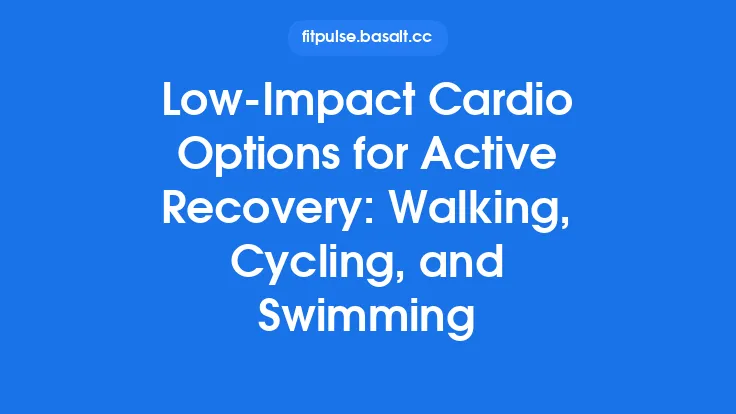Running and cycling outdoors offer unparalleled freedom, fresh air, and a dynamic connection with the environment. Yet, the very elements that make these activities enjoyable can also pose risks if they’re not respected. Whether you’re pounding the pavement in summer heat, navigating icy sidewalks in winter, or tackling windy spring trails, a season‑specific safety plan is essential. Below is a comprehensive guide that walks you through the practical steps you can take to stay protected, healthy, and confident year‑round.
Understanding Seasonal Hazards
Each season brings a distinct set of challenges:
| Season | Primary Risks | Typical Triggers |
|---|---|---|
| Spring | Allergens, slippery mud, sudden rain showers, increased traffic from commuters | Pollen spikes, thawing ground, low‑lying fog |
| Summer | Heat exhaustion, dehydration, sunburn, insect bites, thunderstorms | High temperatures, high UV index, standing water |
| Fall | Reduced daylight, cooler temperatures, leaf‑covered surfaces, early frost | Shorter days, wet leaves, temperature swings |
| Winter | Hypothermia, icy surfaces, reduced visibility, wind chill, limited daylight | Snow, ice, wind, early darkness |
Recognizing these patterns helps you anticipate the right gear, hydration strategy, and route adjustments before you step outside.
Core Safety Principles That Apply All Year
- Plan Ahead
- Route Mapping: Use a reliable GPS or mapping app to chart distance, elevation, and potential hazards. Save offline maps in case of spotty service.
- Check Alerts: Look for local weather warnings, road closures, or trail advisories. Even a brief flash flood warning can turn a safe run into a dangerous situation.
- Tell Someone
- Share your planned route, start time, and expected finish time with a friend or family member. For longer rides, consider a “check‑in” system via text or a tracking app.
- Carry Essentials
- Identification & Emergency Contacts: A small ID card or a phone with an emergency contact saved to the lock screen.
- Basic First‑Aid Kit: Bandages, antiseptic wipes, blister treatment, and any personal medication (e.g., an epinephrine auto‑injector for severe allergies).
- Multi‑Tool or Mini‑Repair Kit (Cyclists): Spare tube, tire levers, mini pump, and a compact multi‑tool for quick fixes.
- Stay Visible
- Even in daylight, reflective elements and bright colors reduce the risk of being overlooked by motorists or other trail users.
- For low‑light conditions, front white and rear red lights are mandatory in many jurisdictions for cyclists and highly recommended for runners.
- Hydration & Nutrition
- Carry water or a hydration pack appropriate to the temperature and duration. In hot weather, aim for 500 ml (≈ 17 oz) per hour; in cold weather, a smaller amount may suffice but still monitor urine color.
- Include electrolytes for longer sessions, especially when sweating heavily.
Spring Safety Strategies
1. Dress for Variable Conditions
- Layer with a lightweight, breathable base, a wind‑resistant shell, and a packable rain jacket.
- Choose shoes with moderate water resistance and good traction for muddy patches.
2. Manage Allergies
- If pollen is a trigger, run early in the morning or later in the evening when counts are lower.
- Consider a breathable mask or a hat with a built‑in visor to limit pollen exposure.
3. Navigate Wet Surfaces
- Opt for shoes with deeper lugs or trail‑specific tread to prevent slipping on mud.
- For cyclists, widen tire pressure slightly (lower PSI) to increase surface contact and improve grip on slick roads.
4. Be Cautious of Insects
- Apply insect repellent containing DEET, picaridin, or oil of lemon eucalyptus.
- Wear long sleeves and pants if you’ll be in tall grass or near standing water.
Summer Safety Strategies
1. Heat Management
- Timing: Run or ride during the coolest parts of the day—early morning or late evening.
- Clothing: Choose moisture‑wicking, UV‑protective fabrics (UPF 30+). Light colors reflect heat.
- Hydration: Sip water every 15–20 minutes; add electrolytes for sessions longer than 60 minutes.
2. Sun Protection
- Apply broad‑spectrum SPF 30+ sunscreen 15 minutes before heading out, and reapply every two hours or after heavy sweating.
- Wear a wide‑brim hat or a visor with a UV‑blocking neck shield.
3. Thunderstorm Awareness
- Monitor local radar; if storms develop, seek shelter well before the first rumble.
- Avoid open fields, tall trees, and metal structures. If caught on a trail, move to a low‑lying area away from water.
4. Insect‑Borne Illness Prevention
- In regions with ticks, perform a full‑body check after each session. Use tick‑removal tools and consider prophylactic medication if recommended by a healthcare provider.
Fall Safety Strategies
1. Adjust to Diminishing Light
- Equip headlamps with a minimum of 200 lumens for runners; cyclists should use a front light of at least 500 lumens and a rear flashing light.
- Wear high‑visibility vests or reflective bands on arms and legs.
2. Layer Smartly
- Use a “mid‑layer” system: a moisture‑wicking base, an insulating fleece, and a wind‑proof outer shell.
- Avoid cotton, which retains moisture and accelerates heat loss.
3. Manage Slippery Leaves
- Leaves can conceal wet patches, ice, or debris. Choose shoes with aggressive tread or consider trail‑specific shoes for better grip.
- Cyclists should keep tire pressure slightly higher (within safe limits) to reduce the chance of punctures from hidden debris.
4. Temperature Fluctuations
- Carry a lightweight, packable blanket or an emergency bivy for longer rides in remote areas.
- Keep a small thermos of warm liquid for post‑exercise rewarming.
Winter Safety Strategies
1. Combat Cold Stress
- Dress in three layers: a moisture‑wicking base, an insulating mid‑layer (e.g., merino wool), and a wind‑proof, waterproof outer shell.
- Protect extremities: thermal gloves, insulated socks, and a balaclava or face mask.
2. Ice and Snow Navigation
- Footwear: Use shoes with steel or carbide spikes, or attach removable ice‑grip devices.
- Cycling: Install winter tires (studded or wider with lower pressure) for better traction. Consider a bike with a disc brake system for reliable stopping power in wet or icy conditions.
3. Visibility in Low Light
- Winter days are short; a combination of bright clothing, reflective gear, and powerful lights is non‑negotiable.
- Use a headlamp with multiple modes (steady, flashing) to adapt to varying visibility.
4. Emergency Preparedness
- Carry a compact emergency kit: thermal blanket, high‑energy snack (e.g., energy bar), whistle, and a small multi‑tool.
- For cyclists, a portable tire sealant can be a lifesaver if a puncture occurs in remote, cold conditions.
5. Monitor Body Temperature
- Pay attention to signs of hypothermia: shivering, confusion, slurred speech, or loss of coordination. If any appear, stop, seek shelter, and rewarm gradually (e.g., using body heat, warm drinks).
Traffic and Road Safety Across All Seasons
- Follow the Same Rules of the Road: Ride or run on the right side, obey traffic signals, and use hand signals when turning.
- Eye Contact: Whenever possible, make eye contact with drivers before crossing intersections.
- Avoid Distractions: Keep music volume low enough to hear approaching vehicles and use single‑ear headphones or bone‑conduction devices if you prefer audio.
- Use Designated Paths: Whenever available, stick to marked bike lanes, sidewalks, or multi‑use trails. If you must share the road, position yourself where you’re most visible.
Personal Security Tips
- Stay Alert: Avoid headphones that block ambient sound completely, especially in isolated areas.
- Carry a Personal Alarm or Whistle: A loud, piercing sound can deter potential threats and attract help.
- Know Your Surroundings: Familiarize yourself with the route beforehand, noting any poorly lit sections or high‑traffic intersections.
- Travel in Groups When Possible: There’s safety in numbers, and group dynamics often encourage better pacing and morale.
Post‑Workout Recovery and Injury Prevention
- Cool‑Down Routine
- Spend 5–10 minutes walking or gently pedaling to gradually lower heart rate.
- Follow with static stretching focusing on calves, hamstrings, quadriceps, hip flexors, and shoulders.
- Rehydration and Nutrition
- Replace fluids lost with water and electrolytes.
- Consume a balanced snack with carbohydrates and protein within 30 minutes (e.g., a banana with nut butter or a recovery shake).
- Inspect Gear
- Check shoes for worn soles, especially after running on abrasive surfaces.
- For cyclists, examine tire tread, brake pads, and drivetrain for wear after each ride.
- Monitor for Delayed-Onset Muscle Soreness (DOMS)
- Light activity (e.g., a short walk) the day after a hard session can reduce stiffness.
- If pain persists beyond 48 hours or is sharp, seek professional evaluation.
Building a Seasonal Safety Checklist
| Season | Clothing | Footwear/Tires | Visibility | Hydration | Emergency Gear |
|---|---|---|---|---|---|
| Spring | Light layers, rain jacket | Water‑resistant shoes, moderate tread | Reflective strips, optional light | Water bottle, electrolytes | ID, basic first‑aid |
| Summer | UV‑protective, breathable fabrics | Ventilated shoes, standard road tires | Bright colors, optional light | Frequent water, electrolytes | Sunblock, insect repellent |
| Fall | Layered system, wind‑proof outer | Shoes with good grip, slightly higher tire pressure | Headlamp, reflective gear | Moderate water, electrolytes | Warm drink, extra layers |
| Winter | Thermal base, insulated mid‑layer, waterproof shell | Ice‑grip shoes or studded tires | High‑lumens lights, reflective clothing | Warm fluids, insulated bottle | Emergency blanket, whistle, multi‑tool |
Print or save this checklist on your phone and review it before each outing. Adjust as needed based on personal tolerance, local climate nuances, and specific route characteristics.
Final Thoughts
Outdoor running and cycling can be exhilarating year‑round, but the key to longevity in these pursuits lies in respecting the environment and preparing for its fluctuations. By integrating season‑specific gear, vigilant route planning, and solid emergency habits into your routine, you’ll minimize risk while maximizing the joy of moving through nature’s ever‑changing canvas. Stay safe, stay aware, and let each season become a new chapter in your cardio adventure.





